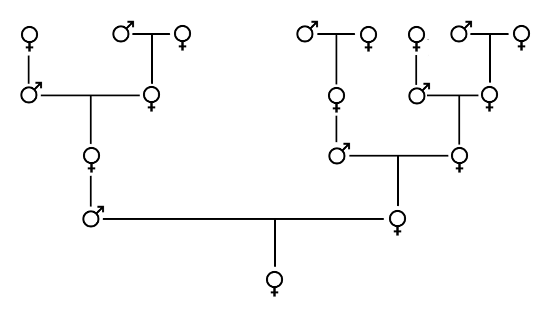
Male bees come from unfertilized eggs, so they have mothers but no fathers. Females come from fertilized eggs, so they have parents of both sexes. This produces an interesting pattern: The number of males in a given generation equals the number of females in the succeeding generation. And the number of females in a given generation equals the number of females in the succeeding two generations:

So the total number of bees, male and female, in generation n is the Fibonacci number Fn.
W. Hope-Jones discovered the relationship in 1921; this example is from Thomas Koshy’s Fibonacci and Lucas Numbers With Applications, 2001.
